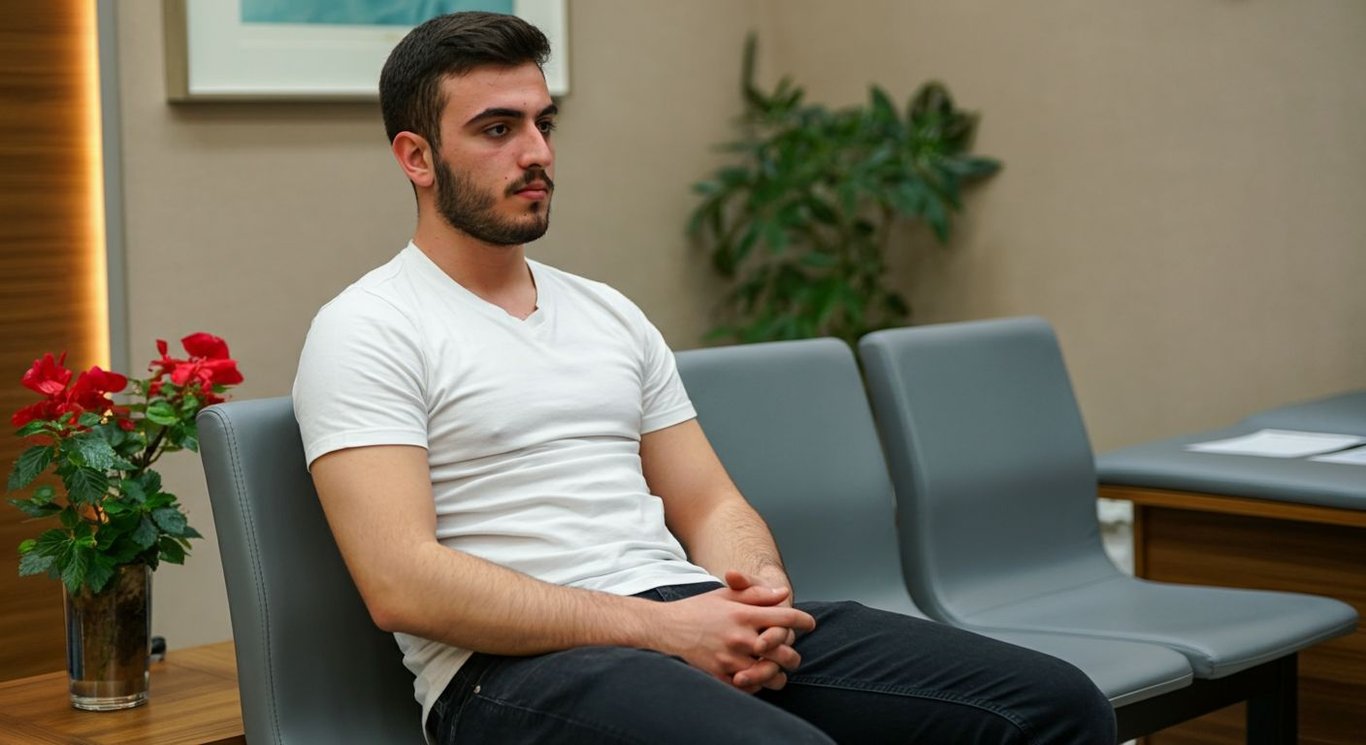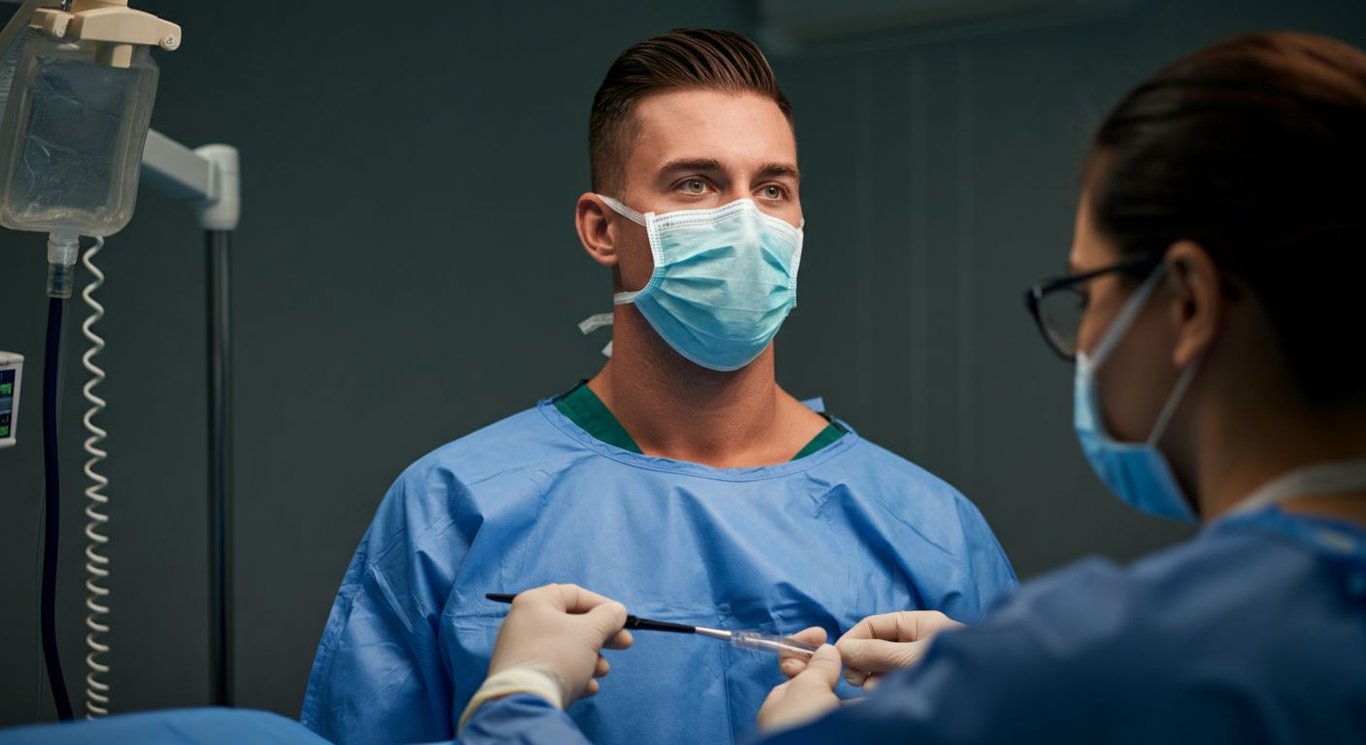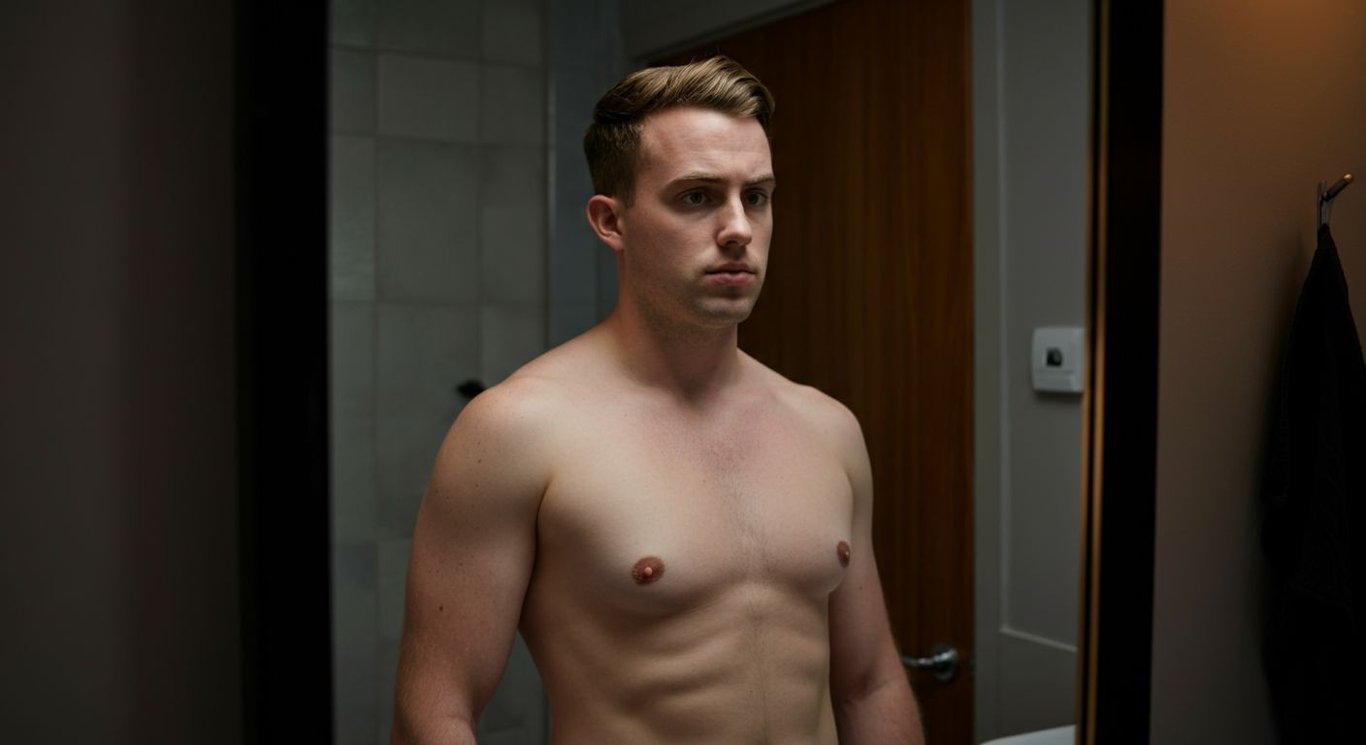Gynecomastia: Understanding Enlarged Male Breasts
Discover everything about Gynecomastia: causes, treatments, and solutions for enlarged male breasts.
Gynecomastia, characterized by the enlargement of breast tissue in males, is a common condition that can affect men at any age. This condition can cause emotional discomfort and may even result in avoidance of certain physical activities to hide the condition. Understanding gynecomastia, its causes, and the difference between gynecomastia and pseudogynecomastia is essential for those seeking solutions. In this blog, we'll explore the various aspects of gynecomastia, including causes, surgical options, and non-surgical approaches.
Decoding Gynecomastia: Beyond Puffy Nipples
Differentiating Gynecomastia from Similar Conditions
Gynecomastia is more than just having "puffy nipples"; it involves actual glandular tissue growth in the male breast. This condition can cause both psychological distress and physical discomfort. Gynecomastia needs to be distinguished from pseudogynecomastia, which is simply the accumulation of fat in the chest area. The best treatment for gynecomastia without surgery depends on accurately differentiating between these conditions.
Gynecomastia is characterized by the proliferation of glandular tissue in the chest, whereas pseudogynecomastia involves only fatty tissue without glandular changes. Treatment methods, such as male breast reduction surgery versus lifestyle adjustments, are determined by the precise diagnosis. Understanding this key difference is crucial for achieving the best possible therapeutic results. Spironolactone may, in some cases, play a role in managing the hormonal imbalances associated with gynecomastia, but is not typically used for pseudogynecomastia.
Key Differences Between Gynecomastia and Pseudogynecomastia
- Glandular Tissue: Gynecomastia involves actual growth of glandular tissue, creating a firm or rubbery feel under the nipple.
- Fatty Tissue: Pseudogynecomastia involves only fatty tissue, feeling softer and less defined.
- Treatment Approaches: Treatments for gynecomastia might include hormone therapy or surgery, while pseudogynecomastia may respond to diet and exercise.
Diagnostic Steps for Gynecomastia
- Physical Exam: A doctor will examine the breast tissue to feel for glandular enlargement.
- Medical History: The patient’s medical history is reviewed to identify potential causes, such as medications or health conditions.
- Hormone Evaluation: Hormone levels, like estrogen and testosterone, may be tested to find hormonal imbalances linked to the gynecomastia.

Gynecomastia vs. Pseudogynecomastia: What's the Real Difference?
Distinguishing Features and Treatment Approaches
While both conditions present as enlarged male breasts, the underlying causes and therefore, the appropriate treatments, differ significantly. Gynecomastia involves the actual growth of glandular tissue, often creating a firm or rubbery feeling around the nipple area. Pseudogynecomastia, on the other hand, is characterized by the accumulation of fat without glandular proliferation. Identifying which condition is present is crucial because it directly influences the treatment strategy.
For pseudogynecomastia, lifestyle adjustments such as diet and exercise may suffice to reduce the appearance of enlarged male breasts. However, gynecomastia might necessitate medical interventions such as hormone therapy to address hormonal imbalances or even surgical procedures like male breast reduction to remove excess glandular tissue. Seeking guidance from a specialist at a gynecomastia clinic can help determine the most effective course of action, tailoring treatment to individual needs.
Factors Affecting the Choice of Treatment
- Hormonal Imbalance: If hormonal issues are triggering gynecomastia, treatments might focus on balancing hormone production.
- Tissue Composition: Predominantly fatty tissue suggests pseudogynecomastia, often managed through lifestyle modifications.
- Symptom Severity: More severe gynecomastia might require surgical intervention to remove excess glandular tissue.
Typical Steps in Diagnosing Gynecomastia
- Initial Consultation: Discuss medical history and concerns with a healthcare provider.
- Physical Examination: A thorough examination to assess breast tissue composition.
- Further Testing: Possible hormonal evaluations to determine imbalances.

The Root Causes of Gynecomastia: From Hormones to Lifestyle Factors
Hormonal Imbalance and Gynecomastia Development
Hormonal imbalances are a primary cause of gynecomastia, especially during puberty when hormone levels fluctuate considerably. This fluctuation can lead to a higher ratio of estrogen to androgen hormones, promoting breast tissue growth in males. Anabolic steroid use can also disrupt this hormonal balance, leading to similar effects. Understanding the interaction between hormones like testosterone and estrogen is key in addressing gynecomastia.
Certain medical conditions and medications can also disrupt hormonal balance, leading to enlarged male breasts. For instance, diseases affecting the liver or kidneys can interfere with hormone metabolism, increasing estrogen levels. Similarly, medications such as spironolactone, which is used to treat high blood pressure and fluid retention, can have estrogen-like effects on the body. Identifying these underlying factors is essential for tailoring the appropriate treatment, potentially avoiding the need for male breast reduction surgery.
Common Causes of Hormonal Imbalance
- Puberty: Natural hormonal changes during adolescence can temporarily disrupt the balance, leading to gynecomastia in some males.
- Medications: Certain drugs, including anabolic steroids and some anti-anxiety medications, can affect hormone levels.
- Medical Conditions: Diseases that impact hormone-producing organs, such as the testes or adrenal glands, can lead to imbalances.
Lifestyle Factors Contributing to Gynecomastia
- Alcohol Consumption: Excessive alcohol intake can impair liver function, affecting hormone metabolism and potentially leading to gynecomastia.
- Obesity: Being overweight can increase estrogen levels, promoting the development of enlarged male breasts.
- Poor Diet: Diets lacking essential nutrients can disrupt hormone production and regulation.

Male Breast Reduction: Surgical Options and Expected Outcomes
Surgical Techniques for Male Breast Reduction
Surgery for gynecomastia, or male breast reduction, is tailored to the individual’s specific condition, considering the extent of both glandular and fatty tissue. Liposuction is commonly employed when excess fat is the primary concern. Excision techniques are used to remove glandular tissue and excess skin. A combination of both liposuction and excision provides comprehensive contouring. Choosing the right technique ensures effective results, addressing the physical and psychological discomfort associated with enlarged male breasts.
The choice of surgical technique also relies on the individual's body type, skin elasticity, and the severity of gynecomastia. For patients with minimal skin laxity, liposuction alone may provide optimal results. However, those with significant skin sagging might benefit from excision, which allows for the removal of excess skin to achieve a firmer, more natural chest contour. Surgical planning is highly individualized, ensuring the best possible outcome for each patient. estethica offers personalized consultations to determine the most appropriate surgical approach.
Factors Influencing Gynecomastia Surgical Outcomes
- Extent of Tissue: The amount of glandular and fatty tissue significantly impacts the surgical approach and the extent of the procedure.
- Skin Elasticity: Better skin elasticity typically leads to more favorable outcomes with less visible scarring.
- Overall Health: A patient's general health condition can affect healing and recovery times.
Post-operative Expectations and Recovery
- Immediate Aftercare: Patients can expect some swelling and bruising immediately following the surgery, which can be managed with medication.
- Compression Garments: Wearing compression garments helps reduce swelling and supports the chest’s new contour during healing.
- Activity Restrictions: Restrictions on strenuous activities are necessary for several weeks to ensure proper healing and minimize complications.
How to Reduce Male Breast Size Naturally
Lifestyle Adjustments to Minimize Gynecomastia
Adopting certain lifestyle changes can significantly help in reducing the appearance of enlarged male breasts, particularly in cases of pseudogynecomastia. Weight loss plays a crucial role, as reducing overall body fat can diminish chest fat accumulation. Dietary modifications, such as cutting down on processed foods and increasing intake of fruits, vegetables, and lean proteins, support both weight loss and hormonal balance. Avoiding excessive alcohol consumption is also beneficial since alcohol can negatively affect liver function and hormone metabolism. These adjustments can lead to a noticeable reduction in male breast size.
Regular exercise, specifically incorporating strength training and cardiovascular workouts, helps in burning fat and building muscle, which can improve chest appearance. Furthermore, it is advisable to avoid substances known to potentially trigger hormonal imbalances, such as certain medications or recreational drugs. By focusing on a healthy lifestyle and averting factors that exacerbate hormonal issues, individuals can often manage or reduce gynecomastia without resorting to surgery. Consulting with a healthcare provider can aid in tailoring these lifestyle changes to individual needs and health conditions and explore options with considerations of gynecomastia spironolactone solutions if necessary.
Effective Strategies for Natural Reduction
- Balanced Diet: Focus on whole, unprocessed foods to support healthy hormone levels.
- Weight Management: Incorporate both cardio and strength training to reduce body fat and build muscle.
- Substance Avoidance: Limit alcohol and avoid drugs that may disrupt hormonal balance.
Essential Steps to Reduce Male Breast Size
- Assess Hormone Levels: Consult a doctor to check for hormonal imbalances that may contribute to gynecomastia.
- Modify Diet: Reduce intake of foods with high estrogenic activity, such as soy products in large quantities.
- Engage in Regular Exercise: Aim for at least 150 minutes of moderate-intensity exercise per week to help with fat loss and muscle gain.
Is Gynecomastia Surgery Painful?
Managing Discomfort During and After Gynecomastia Surgery
Surgical intervention for gynecomastia is typically performed under anesthesia, which significantly reduces pain during the procedure itself. The type of anesthesia used, whether local with sedation or general anesthesia, is determined based on the patient’s specific needs and the extent of the surgery. Therefore, patients generally experience no pain during the active surgical phase. The focus is on ensuring patient comfort and safety throughout the entire process.
Post-operative discomfort is a normal part of the healing process following male breast reduction. However, pain levels can be effectively managed with prescribed pain relievers and adherence to post-operative care instructions. Proper wound care, avoiding strenuous activities, and wearing compression garments as directed can minimize discomfort and promote smoother recovery. While individual pain experiences vary, most patients find the discomfort manageable with appropriate care.
Post-Operative Pain Management Strategies
- Medication: Prescribed pain relievers are the first line of defense, tailored to individual needs.
- Compression: Wearing compression garments helps to reduce swelling and provides support, minimizing discomfort.
- Activity Restrictions: Avoiding strenuous activities prevents complications and reduces post-operative pain.
Understanding the Role of Anesthesia in Gynecomastia Surgery
- Pre-operative Assessment: An anesthesiologist evaluates the patient’s health to determine the safest type of anesthesia.
- Anesthesia Administration : During surgery, anesthesia ensures the patient feels no pain, aiding in a comfortable experience.
- Post-operative Monitoring: Continuous monitoring helps manage any immediate post-surgical pain and ensures stability.
Advanced Gynecomastia Evaluation and Treatment
estethica specializes in differentiating between gynecomastia and pseudogynecomastia to ensure patients receive the most appropriate treatment, whether through surgical or non-surgical methods. Accurately assessing the underlying causes of enlarged male breasts allows for a personalized plan, including lifestyle adjustments, hormone therapy, or male breast reduction surgery.
The medical team at estethica is highly skilled in physical examinations, medical history reviews, and hormone evaluations to identify hormonal imbalances linked to gynecomastia. They are proficient in techniques like hormone therapy and surgical interventions to ensure the most effective management of gynecomastia and related conditions.
Post-operative Gynecomastia Care and Comprehensive Pain Management
estethica ensures patient comfort and safety during and after gynecomastia surgery. Surgical interventions are performed under anesthesia to reduce pain, with the type of anesthesia determined based on patient needs and the extent of the surgery. Emphasis on proper wound care, activity restrictions, and compression garments minimizes discomfort and promotes a smoother recovery.
Patients at estethica experience manageable discomfort post-surgery through prescribed pain relievers and adherence to post-operative care instructions. Continuous monitoring helps manage any immediate post-surgical pain, ensuring patient stability and promoting enhanced healing. The commitment to patient comfort and excellent care results in positive recovery experiences.
Frequently Asked Questions
What is gynecomastia and how does it differ from pseudogynecomastia?
What are the primary causes of gynecomastia and can lifestyle factors play a role?
What surgical options are available for male breast reduction and what outcomes can be expected?
Is it possible to reduce male breast size naturally and what strategies are most effective?
Achieve your aesthetic goals with estethica's expert team and advanced techniques.
📞 Schedule Your Free Consultation!